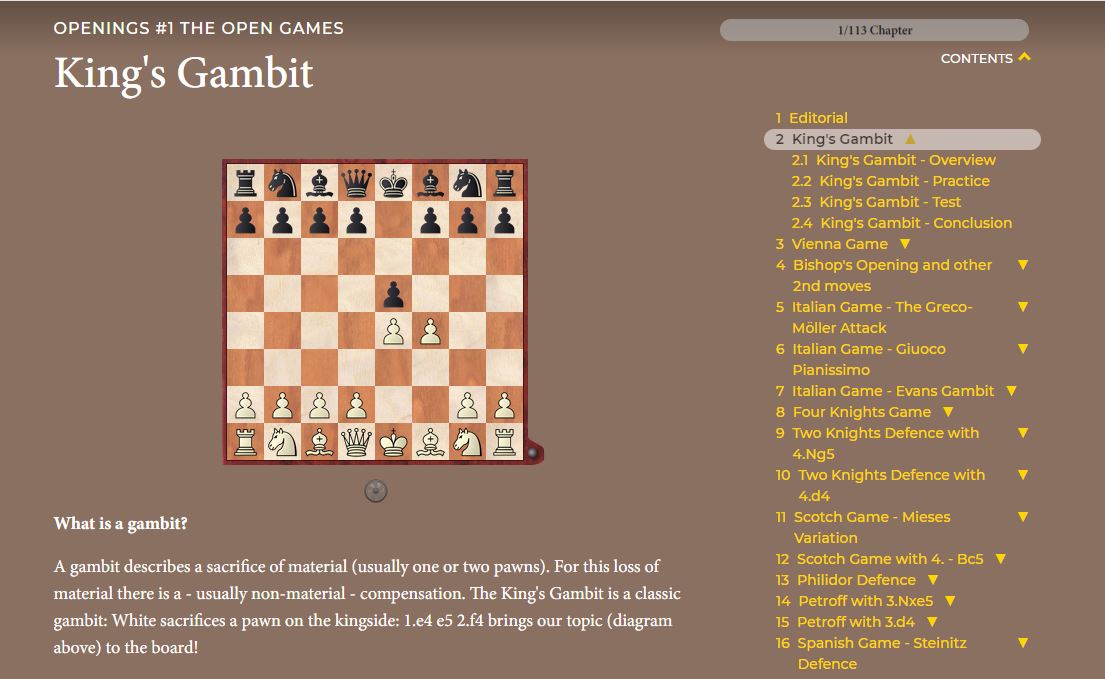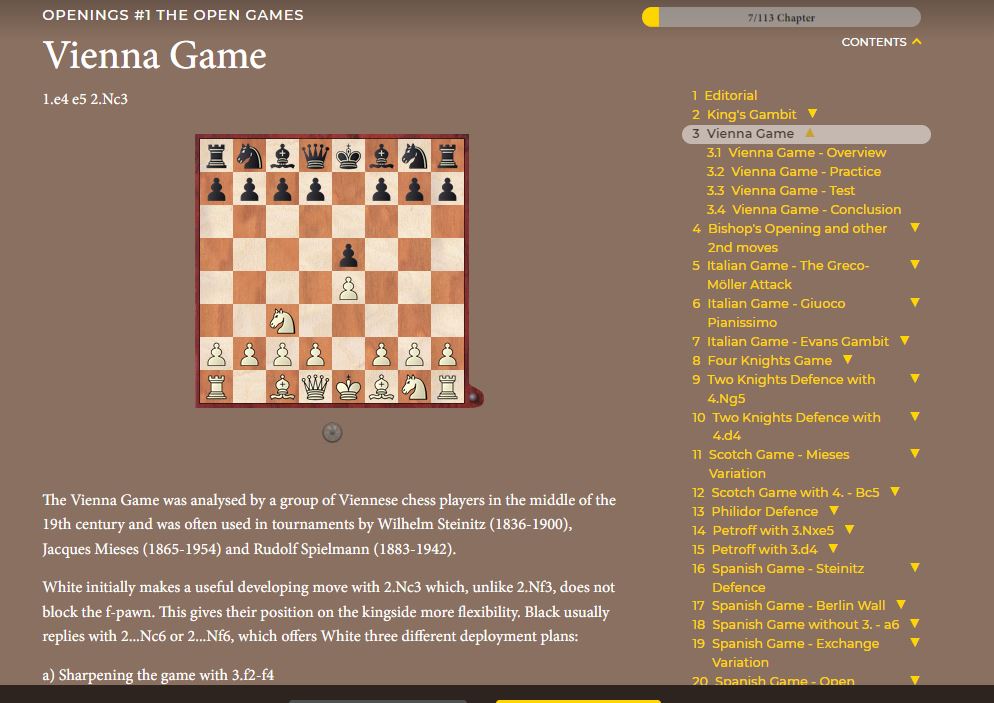.jpeg)

.jpeg)
Are you also one of the many players who, wishing to improve their game and their results, have wondered how to build a viable opening repertoire? The fact that you have called up this article about the new ChessBase book entitled "Openings Volume 1: Open Games" certainly suggests that you are!
Chess is complicated - and this is evident at every stage of the game. This is also true of the opening. The incredible number of openings, variations, sub-variations and opening tips in books, videos and on the internet will sooner or later drive even the most ambitious amateur to despair. There are various ways around this problem: one of the least promising is to follow the "let's hope for the best" approach. Anyone hoping to reach a higher level without any theoretical knowledge will occasionally get lucky, but will also experience a few quick crashes. The other extreme also has the potential to cause frustration: if you cram a mass of opening variations into your head, even if you get into the positions you have learnt, you will eventually simply not know what to do with your opening success in the middle game. And the latter method does not promise much enjoyment of chess anyway.
No more cramming of opening lines
But here is some really good news: as Dorian Rogozenco, the chess director of this ChessBase book and former coach of the German national team said, no one needs to memorise countless variations any more. Instead, you should use the knowledge you already have in a targeted way for your own purposes. An important tool for this is the recently published, multimedia ChessBase book. Anyone interested in open games will find a clearly structured and easy-to-use overview of these openings, which are particularly suitable for beginners and club players (up to around 1800 Elo) and help them to make rapid progress. But the opening compendium is also a good help for stronger players in their search for ideas for their repertoire.

The successful trainer Rogozenco refers in particular to the stringent structure of the material: each of the 22 opening chapters consists of the sub-sections "Overview", "Practice", "Test" and "Conclusion". In order to be able to explain these sub-sections in a comprehensible way, the author of these lines has subjected himself to a self-experiment:
For many years I have been interested in the King's Gambit, but I didn't dare approach the opening. I thought: "It looks complicated and requires a lot of learning." So it didn't really suit me, because I don't like hammering variations into my brain. But somehow I would like to have another alternative to my beloved – but in some lines difficult to dubious – Belgrade Gambit.

The fact that the King's Gambit is the first opening to be considered in the ChessBase Book did not make it any less exciting for me. So let's get started with "The Overview":

Here Valeri Lilov summarises the King's Gambit Accepted and the King's Gambit Declined as it was played in the romantic and wild days of chess. It whets the appetite for more. And there is more in the "Overview" and "Practice" sections. To quote Dorian Rogozenco: "In the overview section, videos by Elisabeth Paehtz, Niclas Huschenbeth, Jan Gustafsson and Karsten Müller provide a brief summary of the respective topics and basic variations, as well as typical lines, strategies and opening traps. In the 'Practice' section you will find a selection of recent Grandmaster games to give you an overview of modern theory and help you develop a feel for the positions that arise."
To be honest, I'm itching to get started and to blitz away. But I'm still in control and I'm listening to the important recommendations of the former national coach. So first of all, the test series...

And yes: some of it already seems familiar to me, and I'm sure I'll have to think about some of it less than if I'd looked at the problems before starting this ChessBase book. After the five current games, covering the variations presented, the four tests are quickly completed. I'll save the conclusion for later...
Now I need a worthy opponent! So I start up Fritz19 and challenge the snorting bull - let's get some action on the board. A few hours and games later, I have gained some important (and sometimes painful) experience. I now know where to look for examples from the ChessBase database for the tournament. On the other hand, my doubts are a little too great and I'm thinking about what else I can do with the newly acquired knowledge.
First of all, though, I'd like to read the conclusion to the King's Gambit. It contains the weighty sentence: "An opening for all those who like to attack, who want a sharp, tactical battle, who are not afraid of sacrifices." But my reality is somewhat different – attacking is nice, but at all costs?! In that case, I think I'd rather stick with the controlled offence of the legendary football coach Otto Rehhagel. Let's see if I can find something suitable for that too...
… And yes: the next chapter is about the Vienna.

Another classic that is perhaps not among the most common openings today – which I particularly like. I follow the same principle as with the King's Gambit. Here, Jan Gustafsson explains to me what is important and how the individual lines are to be classified. After a few more hours, I realise that, although I don't want to play 3.f4 or 3.Bc4 after 1.e4 e5 2.Nc3 Nf6, I find 3.g3 interesting. However, I first intensively test 3.d4, because it resembles the Scandinavian that I often play with Black. I don't just let Fritz19 test me, but also throw myself into a few online games. Of course, that takes a little longer because not everyone does me the favour of playing 1…e5. After a few Vienna games played like this, I decided to get some more material from the Mega Database. In any case, the somewhat calmer and less complex structure of the game seems to be more in line with what I am looking for – including the surprise effect mentioned in the conclusion.

Basic Opening Training
This self-experiment summarises some of the advantages of this ChessBase book:
As a user of the opening volume 1 – Open openings, you will get a quick overview of the following openings (some with several chapters on different variations, for example in the Italian or Spanish):
The King's Gambit, the Vienna, the Bishop's Opening and Co., the Italian, the Two Knights and the Four Knights Variations, the Scotch, the Philidor, the Russian and the Spanish.
In my opinion, the main advantage of this approach is that it replaces the less promising memorisation of openings with constructive learning. This is based on the current knowledge of top grandmasters and the chess director of the ChessBase book "Openings Volume 1: Open Games", Dorian Rogozenco. As a former national coach and internationally renowned trainer, he not only presents a promising method with this product, but one that can even make opening theory muffs enjoy learning.

| Advertising |